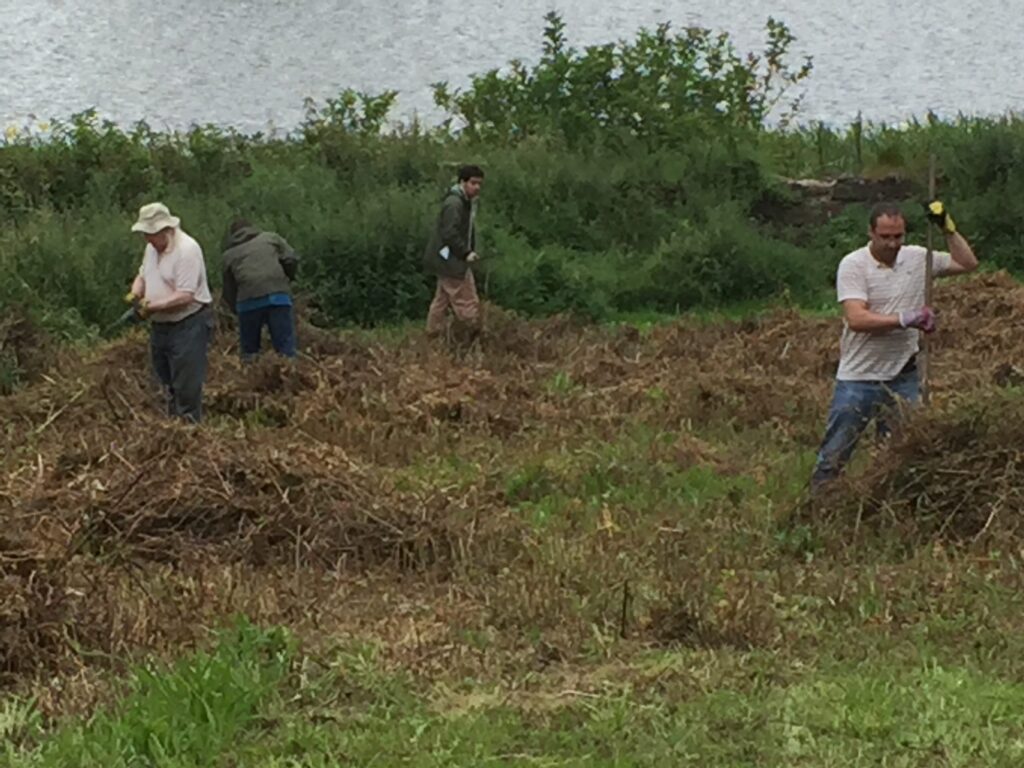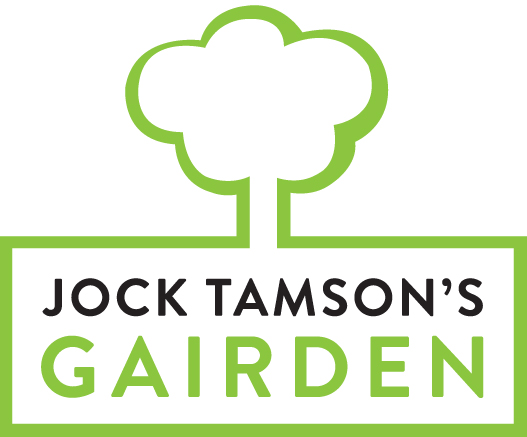Jock Tamson’s Gairden – within the Glebe:

The word Glebe itself is from Middle English, from the French “glèbe”. The Glebe can include strips in the open field system or grouped together into a compact plot of land. In early times the main means of support for the parish clergy but glebe land was either granted by any lord of the manor or the church’s parish.
This is a very scenic site overlooking Duddingston Loch with the Pentland Hills in view and Arthur’s Seat opposite.


The Minister, Rev Dr James Jack, had a vision that this section of land could be put to good use rather than remain as a large grassed area. The Kirk Session had been living with this as a concept for the past three years. The Duddingston Glebe became available when we had to terminate the lease we had with Scottish Wildlife who had developed the land as part of the conservation area and local bird sanctuary. The 4-acre plot had previously been used as a nursery for Dobbie’s garden centre and this had left the soil very fertile. The Kirk Session wished to explore the possibility of extending our ministry and mission into the use of the field.
At that time the Church of Scotland was offering grants for projects which offered ways —
“to encourage creative ways of working which develop the life and mission of the local church and are transformative for communities and congregations”.
The grants were under the heading of “Go for It” and paid 50% towards all associated costs over a 3 year period.
It was agreed that a group from the Kirk progress work on an application for the grant and so the story begins.
We built up a list of what needs could be met. Here are some examples:
• Given the population and age profile of our parish we identified a need to offer places to reflect faith through a series of quiet ‘places’ within the grounds.
• A need to change perceptions about healthier life styles both in terms of an understanding of the damage to the climate food being transported vast distances but also to enable an appreciation of how to change this situation themselves by growing their own produce.
- To allow public access to the Glebe and develop holy places in which to commune with God. Often people comment how the city noise is all around but here is a natural place to be at peace
- To grow organic fruit and vegetables by encouraging local involvement and to get the community to grow in their own gardens through example. And to enable local people to explore the challenge and to take care of our environment and an appreciation of how to change this situation themselves by growing their own produce.
- The project would involve volunteers to grow organic fruit and vegetables to provide food for our local food co-op.
It was decided that the glebe should have two main purposes. Firstly, to have a spiritual side which would allow people to enjoy the peace that the space offers and to explore their faith in God by the opportunities that the project could offer. Secondly to allow the land to grow organic fruit and vegetables to provide a centre of excellence in promoting organic gardening for the folk who live in the parish. We wanted to develop a centre of excellence and have a teaching facility to pass on organic gardening, with the produce benefiting the local food co-op in a neighbouring Priority Area. Raised vegetable beds will be included to enable wheelchair users to participate.
• A place to grieve – we have a metal vine with copper leaves that are engraved in remembrance of a person who has died.
Within the garden we see a need to share a message of sustainability in how we produce our food and how we resource it. Most of the food we buy in Scotland has been transported to us — sometimes flown in from the other side of the world. The carbon emissions that often result from these ‘food miles’ are one way in which we are adding to climate change. In addition, much of our food is now produced using intensive farming methods, which have high carbon emissions and other environmental impacts, such as pollution from chemical fertilisers and pesticides, associated with them. In contrast, food produced organically helps lock carbon into the soil and doesn’t use chemicals.
This is NOT a garden project only. It is about nurturing people in faith through their connection with the project to enable them to appreciate their environment and finding God within it. The project is about making contact with people in the parish who have never been to church and creates opportunities for outdoor worship. We also created a “Garden Room” in an existing hall which was a physical link between the land and the church building.
This interface offers hospitality by providing refreshments and encouraging communication with those people visiting and working within the Glebe. It also enabled the Kirk to be opened to the public. 8,000 people a year visit Dr Neil’s Garden, walking through the church grounds to get there and the opportunity to have refreshments was welcomed.
In order to move the project ahead an advert for a Project manager’s position and we were extremely luck to employ Lizz Spence who carried out marvellous work over that time. When the 3 years were over, we found that another “extension” loan over a further period of 2 years and after additional effort by Lizz, Rev Dr Jim Jack and others this extension was achieved, so Lizz remained in-post.
That extended period comes to an end in January 2021, so a number of months ago discussions started as to what options were available to maintain momentum. In fact, these options were extremely limited and so, after a lot of discussions, it was decided the best way forward was for the Glebe area to become a “Trust”.
This group has now been formed and consists of 6 members who are working very hard to maintain not only the status quo, but move forward with this latest venture of Jock Tamson’s Gairden.

Glebe towards Duddingston Loch and the Thomson Tower

